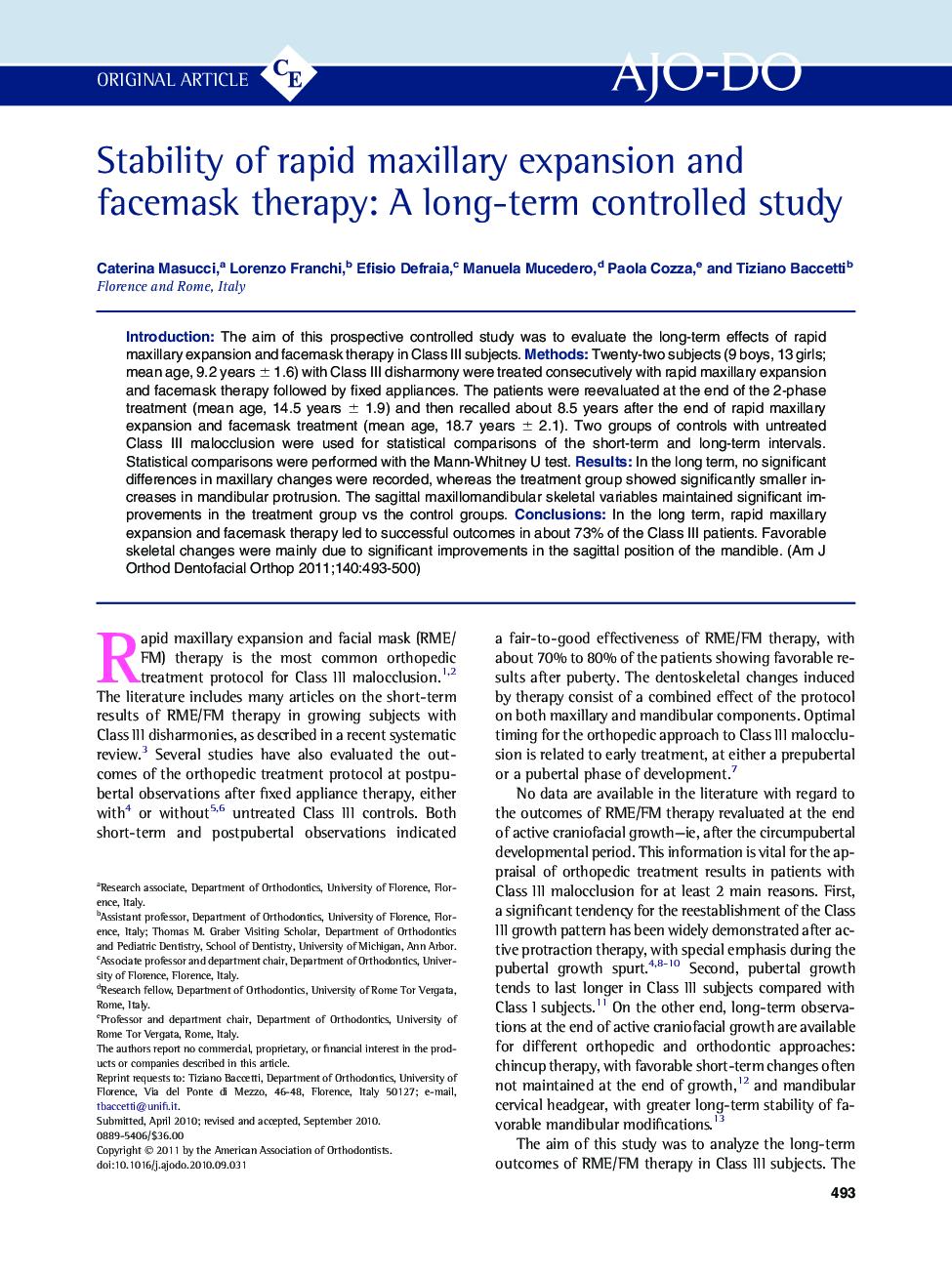| Article ID | Journal | Published Year | Pages | File Type |
|---|---|---|---|---|
| 3118196 | American Journal of Orthodontics and Dentofacial Orthopedics | 2011 | 8 Pages |
IntroductionThe aim of this prospective controlled study was to evaluate the long-term effects of rapid maxillary expansion and facemask therapy in Class III subjects.MethodsTwenty-two subjects (9 boys, 13 girls; mean age, 9.2 years ± 1.6) with Class III disharmony were treated consecutively with rapid maxillary expansion and facemask therapy followed by fixed appliances. The patients were reevaluated at the end of the 2-phase treatment (mean age, 14.5 years ± 1.9) and then recalled about 8.5 years after the end of rapid maxillary expansion and facemask treatment (mean age, 18.7 years ± 2.1). Two groups of controls with untreated Class III malocclusion were used for statistical comparisons of the short-term and long-term intervals. Statistical comparisons were performed with the Mann-Whitney U test.ResultsIn the long term, no significant differences in maxillary changes were recorded, whereas the treatment group showed significantly smaller increases in mandibular protrusion. The sagittal maxillomandibular skeletal variables maintained significant improvements in the treatment group vs the control groups.ConclusionsIn the long term, rapid maxillary expansion and facemask therapy led to successful outcomes in about 73% of the Class III patients. Favorable skeletal changes were mainly due to significant improvements in the sagittal position of the mandible.
